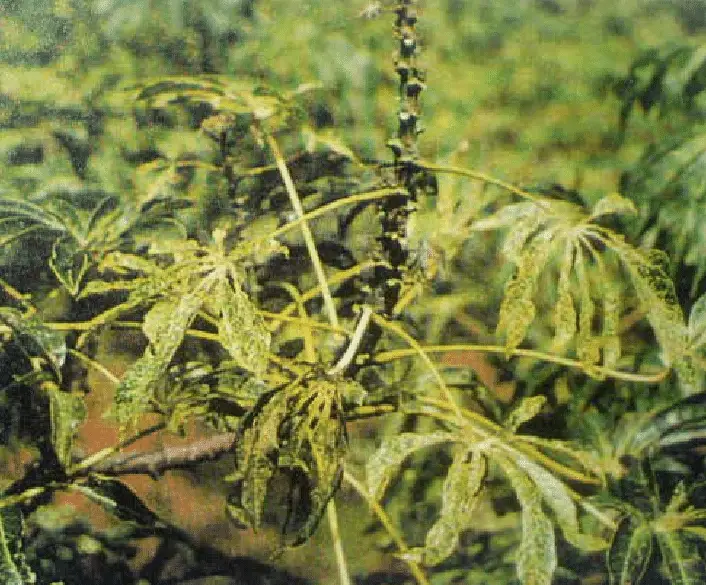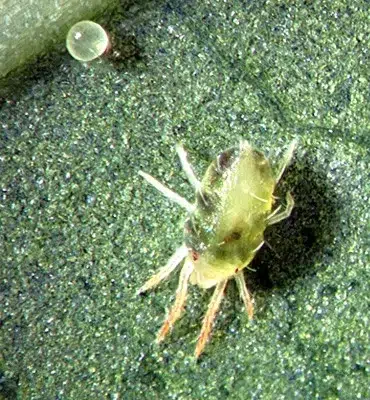Cassava Green Mites
Cassava green mites, scientifically known as Mononychellus tanajoa, are tiny pests that cause havoc on cassava plants. The pest belongs to the family Tetranychidae and can be found in several regions worldwide, including Africa, Asia, and the Americas.
As their name suggests, cassava green mites are predominantly green in color, making them blend in with the foliage of cassava plants. In this article, we will explore the cassava green mites, their impact on cassava plants, etc.
Are All Cassava Varieties Poisonous?
Not all cassava varieties are poisonous. cassava does contain cyanogenic glycosides, a compound that can release cyanide. it is present in higher concentrations in the bitter varieties of cassava.
Commercially available cassava varieties undergo processing methods that effectively reduce cyanide content to safe levels, rendering them suitable for consumption.
Can Cassava Be Eaten Raw?
Raw cassava contains higher levels of toxic cyanogenic compounds, and thus, it is not recommended to consume it without proper processing.
These toxic compounds can lead to cyanide poisoning, causing severe health issues. Traditional methods of processing such as soaking, fermenting, or boiling cassava eliminate the cyanide content, making it safe for consumption.

Symptoms of Cassava Green Mite
Cassava, a tropical root crop, is an essential food source for millions of people around the world. However, like any other crop, it is susceptible to pests and diseases. One such pest is the cassava green mite (Mononychellus tanajoa). Below are the five (5) symptoms:
- Leaf Discoloration and Bronzing.
- Stunted Growth and Reduced Yield.
- Webbing and Silk Threads
- Leaf Curling and Distortion
- Leaf Drop and Defoliation
Leaf Discoloration and Bronzing
One of the most prominent symptoms of cassava green mite infestation is leaf discoloration. As the mites feed on the underside of the leaves, they suck out the sap, resulting in the upper leaf surface turning yellow or bronze. This discoloration gives the leaves a dull appearance and adversely affects the overall health of the cassava plant.
Stunted Growth and Reduced Yield
Cassava plants infested with green mites often exhibit stunted growth. The mites weaken the plants by feeding on the leaves, which hinders their ability to grow and develop properly. This can lead to reduced yield and ultimately affect the livelihoods of farmers who rely on cassava as a staple crop.
Webbing and Silk Threads
Another characteristic symptom of cassava green mite infestation is the presence of webbing and silk threads on the leaves and stems of the plant. The mites produce these webs to protect themselves and their eggs. If left untreated, these webs can cover large portions of the plant and further hinder its growth and productivity.
Leaf Curling and Distortion
Cassava leaves affected by green mites often exhibit curling and distortion. The feeding activity of the mites causes the leaves to curl inward along the midrib, giving them a twisted appearance. This curling and distortion not only affects the aesthetics of the plant but also disrupts its photosynthesis process, leading to reduced vigor and yield.
Leaf Drop and Defoliation
Severe infestation of cassava green mites can result in leaf drop and defoliation. As the mites continue to feed on the leaves, they weaken the plant to the point where it can no longer sustain its foliage. This loss of leaves further stresses the plant and can significantly impact its ability to produce tubers, thus reducing the overall yield.
How to Control Cassava Green Mite
To effectively control cassava green mites, it’s essential to accurately identify the presence of these pests on your cassava plants.
Look out for the following signs and symptoms:
1. Yellowing of leaves: Infested cassava leaves often turn yellow, starting from the lower part of the plant and gradually spreading upwards.
How to Start Fish Farming on a Small Scale
2. Webbing: Cassava green mites produce fine webbing, similar to spider webs, on infested leaves.
3. Stippling: Presence of small white or yellow spots on the upper surface of leaves, indicating feeding damage by mites.
Chemical Control
Chemical control is one of the most common methods used to combat cassava green mite infestation. However, it is vital to exercise caution when using pesticides and strictly adhere to recommended safety measures.
Follow these steps for effective chemical control:
1. Choose the right pesticide: Select a pesticide that specifically targets cassava green mites, as not all pesticides are effective against them. Consult a local agricultural expert to determine the most suitable option.
2. Timing is key: Apply the pesticide during the early stages of infestation when the mite population is limited. This will prevent rapid reproduction and minimize the damage caused.
3. Follow dosage instructions: It is crucial to follow the recommended dosage and application frequency provided on the pesticide label. Using excessive amounts may harm the cassava plants and the environment.
Cultural Control
Cultural control practices are another way to control cassava green mites. These practices focus on creating unfavorable conditions for mite proliferation. Consider the following cultural control methods:
1. Crop rotation: Rotate cassava with other non-host crops to break the life cycle of cassava green mites. This prevents the buildup of mite populations in the soil.
2. Removal of infested leaves: Regularly inspect cassava plants for infestations and promptly remove the infested leaves. This reduces the number of mites and their spread to healthy leaves.
3. Pruning: Prune the cassava plants to increase air circulation and sunlight penetration, creating an inhospitable environment for mite development.
Biological Control
Biological control offers a sustainable and eco-friendly approach to managing cassava green mite infestations. It involves the use of natural enemies to control mite populations.
Check out the following biological control methods:
1. Predatory mites: Introduce predatory mites, such as Neoseiulus idaeus and Euseius hibisci, which feed on cassava green mites. These predatory mites help regulate mite populations.
2. Parasitic wasps: Parasitic wasps, such as Anagyrus lopezi, are known to parasitize cassava green mite eggs. Introducing these natural enemies can significantly reduce mite infestations.
3. Conservation of natural enemies: Promote biodiversity in your cassava plantation by providing suitable habitats for natural enemies. Encouraging the presence of spiders, ladybugs, and birds can aid in controlling mite populations.
Integrated Pest Management (IPM)
To achieve long-term and sustainable control of cassava green mites, it is advisable to adopt an Integrated Pest Management (IPM) approach.
IPM combines multiple control methods, including cultural, biological, and chemical control, to effectively manage pest infestations while minimizing ecological impact.
Frequently Asked Questions
Q1: Is bitter cassava poisonous?
A:Bitter cassava contains higher levels of cyanide, making it potentially toxic if consumed raw or improperly processed. However, thorough processing methods effectively reduce cyanide content, rendering bitter cassava safe for consumption.
Q2: What are the common symptoms of cyanide poisoning from cassava consumption?
A: Symptoms of cyanide poisoning from cassava consumption may include headache, dizziness, weakness, confusion, and in severe cases, coma or death.
Q3: Are there any alternative uses for cassava apart from food?
A: Yes, cassava is utilized in the production of biofuels, animal feed, starch, flour, and even as a component in industrial manufacturing processes.
wrap up
Cassava green mites pose a significant threat to cassava plants. However, not all cassava varieties are poisonous, and proper processing methods effectively minimize the risk of cyanide poisoning. It is essential to educate oneself on safe cassava consumption practices to ensure the well-being of individuals who rely on this staple food source.
Additionally, there are ways to control cassava green mites, you need to reread the article. If you don’t control green mites on your farm, it will damage your plant, leading to reduced yields and economic losses. By understanding the intricacies surrounding cassava green mites and their impact, we can better appreciate this versatile crop.


